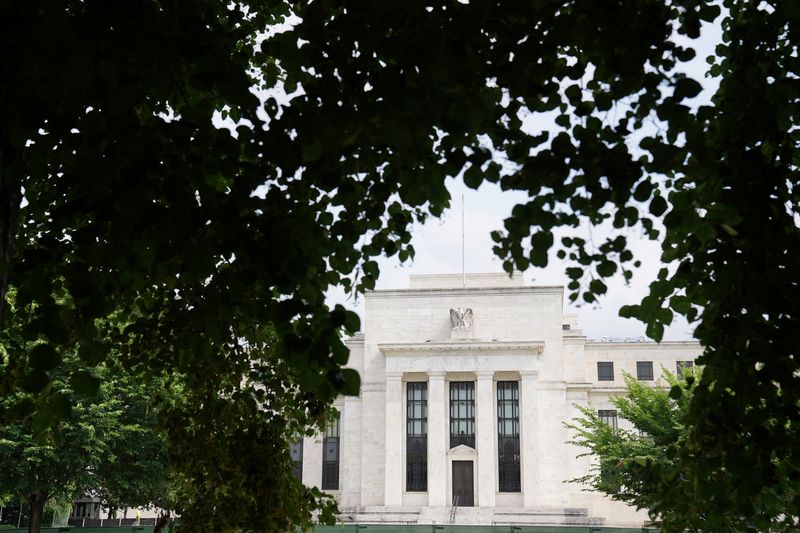Investing.com -- The Federal Reserve is widely expected to deliver its first rate cut next month and followed it up by cutting again in December to ensure the economy remains on track for a soft landing just as fears of a recession resurface.
"Fed rate cuts will start in September, and continue in December," Macquarie said in a Thursday note.
Expectations for a September rate cut were given another boost on Wednesday after Powell signaled that a rate cut was on the table for September should incoming data provide further confidence of progress on inflation.
"Powell noted that a rate cut 'could be' on the table in September, albeit," Macquarie said, "subject to 'the totality of the data support[ing] such an outcome' - specifically 'inflation, employment, and the balance of risks'", Macquarie added.
Despite the path toward a first rate cut drawing closer, fears of a U.S. recession were front and center on Thursday after data showed further weakening in U.S. manufacturing activity and climb in initial jobless claims.
Initial jobless claims increased to 249,000 for the week ended in Jul. 27, higher than expected, while the ISM manufacturing index for July came in at 46.8, below the 48.2 forecast.
The weakness in manufacturing activity appears to be of particularly concern, Jefferies noted Thursday, as it marked the "16-month streak of sub-50 readings that extended from November 2022 through March 2024."
This is the "longest streak of contraction since August 2000-January 2002 (18 months), notably exceeding the decline surrounding the Great Financial Crisis," it added.
While rate cuts should "spark a rebound in private sector demand for capex investment," Jefferies says, this demand could be "soft if the cuts are a response to weakness in the economy."
Powell on Wednesday didn't appear too concerned about a downturn in the economy, noting that the recent slowdown has been gradual rather than rapid.
The Fed chief also said, however, that if the gradual pace of the slowdown were to accelerate, then the Fed would be prepared to act.
"We have a lot of room to respond if we were to see weakness," Powell added. "That's not what we're seeing."
The weaker round of data comes just a day ahead of the nonfarm payrolls report for July that economist estimate could show further slowing in the U.S. jobs market.
Following the downward revisions to the May and June payroll gains, some continue to expect more of the same in Friday's report that will likely stoke further worries about the pace of slowing in the labor market.
"We expect downward revisions to prior months, the composition of which poses risks to the outlook for July," UBS said in a recent note.
